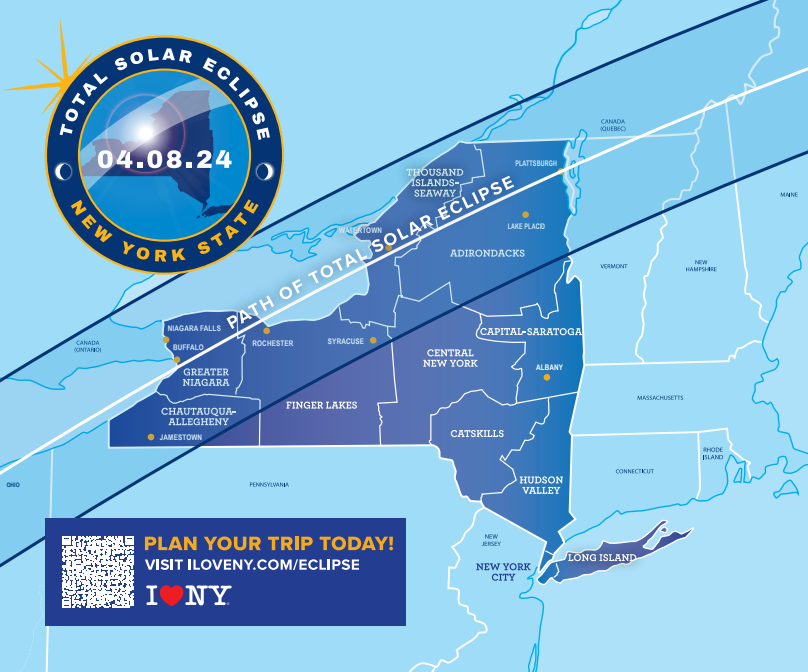New York State Total Solar Eclipse - April 2024
New York State Total Solar Eclipse
A solar eclipse will be visible in New York State on the afternoon of April 8, 2024. New York will be one of eleven contiguous U.S. states situated within the path of totality for the total solar eclipse. Several regions of the state will be in the direct path of totality. Other parts will be able to view a partial solar eclipse. This presents a unique educational opportunity for students to learn about this exciting astronomical event, and an ideal teachable moment for teachers to delve into the wonders of the cosmos. The next total solar eclipse will not happen in New York again until 2079.
Potential considerations for schools
Except during the brief total phase of a total solar eclipse, when the moon completely blocks the sun's bright face, it is unsafe to look directly at the sun without specialized eye protection for solar viewing.
School districts are highly encouraged to begin planning for this event, and to keep the following in mind:
- Schools are encouraged to review their school calendars sooner rather than later to avoid potential conflicts with other school related events and activities.
- The eclipse will begin and occur shortly after 2:00 pm, which may overlap with school dismissal.
Resources
Additional information on the solar eclipse is available on the following websites:
- New York State Library – Eclipse Information page
- Public Broadcasting System Learning Media – Eclipse Information page
- I Love NY Eclipse webpage
- New York State Center for School Health – Solar Eclipses Eye Safety: Protect Your Eyes from the Sun!
- NASA April 8 2024 Solar Eclipse webpage
- National Science Teachers Association Eclipse Guides, Resources and More webpage
Connection to the Standards
Instruction on the eclipse can be connected to the New York State Learning Standards for Science, Math, English Language Arts (ELA), Literacy in History, Social Studies, and the Arts:






